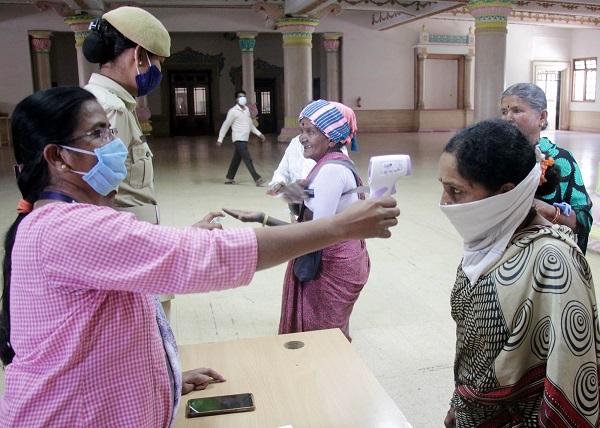
Bengaluru, (Samajweekly) COVID lockdown thwarted Karnataka Water Resources Department’s summer canal repairs, leaving half the time to scramble on a war footing before the monsoon sets in, an official said on Monday.
“Lockdown has made one adverse impact. In the months of March, April and May, we prepare our canals and others things in such a way that when monsoon waters come, it is handled properly,” told Water Resources Department Additional Chief Secretary Rakesh Singh to IANS.
The three months’ time enables the department to dig out rodents, snakes and bandicoots which have burrowed into the canal banks and bunds, leaving the structure weakened.
“What happens after December, January months is that water flow stops in the canals. It becomes extremely dry, and they are particularly affected by rats, rodents, bandicoots and snakes,” said Singh.
The dry conditions harden the soil, resulting in cracks which encourage the rodents and reptiles to burrow the banks.
“They make holes in the earthen structure of the canal, when water flows in the monsoon time, there is likelihood of cracks and getting damaged further,” he said.
The unforeseen lockdown has eaten into these operations and time, forcing the department to forgo the usual tender process to identify contractors to finish the work in a war footing with manual labour.
“These canals are age old canals as such, they have become relatively weak, except where we have done modernization. When there is water flow with high velocity, it penetrates and the canal bund breaches,” said Singh.
According to the department’s website, the Karnataka Water Resources Department harnesses surface water for irrigation and drinking water purposes, divided into Major Irrigation Projections and Medium Irrigation Projects.
Major Irrigation Projects constitute a culturable command area (CCA) of 10,000 hectares and minor ones constitute between 2,000 to 10,000 hectares.
Both minor and major irrigation projects cater to more than 40 lakh hectares of land.
Lakshmanrao Peshve, Water Resources Department Secretary said they could not observe any major lockdown impact on the 13 major reservoirs in the state.
“Nothing in reservoirs because it is just standing water. There is nothing to find, once water is stored, it is like that only. Nobody can find out what is happening inside, nobody can go inside,” Peshve told IANS.
The department is also not equipped with modern equipment such as remote operated vehicles (ROV) or any robot to study the reservoir depths and the state of water.
The state’s major reservoirs include Linganamakki, Supa, Varahi, Harangi, Hemavathi, K. R. S., Kabini, Bhadra, Tungabhadra, Ghataprabha, Malaprabha, Almatti and Narayanapura.
As of Monday, all the 13 major reservoirs together have a live water storage level of 255.54 thousand million cubic feet (TMC) compared to their total capacity of 825.36 TMC.
These are the sources of drinking water for Karnataka’s major towns and cities, including Bengaluru.
Following floods in 2019, water storage in all the reservoirs has been really good, Singh said.
“Their penetration to address drinking water needs has also been very good. Their contribution to contemplated irrigation has been good,” Singh said.
Commenting on the positive effects of lockdown which the department could take forward in the future as well, the secretary said no human activity occurred during the lockdown, restricting the department’s work.
“There was no human activity, we also couldn’t do anything, we are also under lockdown. No surveying can be done, nothing can be monitored. There are no vehicles to go. Also, we could not carry out any repair works,” pointed out Peshve.
Despite the lockdown handicaps, both Singh and Peshve said pollution would have reduced substantially in the water bodies.
“No assessment has been done, I am talking from common sense. The quality of water in these water bodies must have improved,” said Singh alluding to the stoppage of garbage and sewage run off into urban water bodies.
He recently visited Bellandur and Varthur lakes in the city and said that the quality of water has improved though the quantity has lessened.









